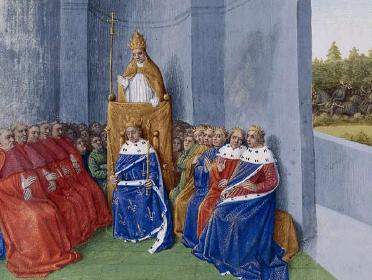Pope Urban II - The Man Who Started the Crusades

Table of Contents
- Early Life
- Election as Pope
- Council of Clermont
- Pope Urban's Speech at Clermont
- Last Years of Pontificate and Death
Quick Facts
Pope Urban II was born as Otto or Odo de Lagery about 1042 in France.
He was elected pope on March 12, 1088.
He pursued the reform movement started by Pope Gregory VII and the conflict with Emperor Henry IV over the appointment of church officials.
Pope Urban's speech at the Council of Clermont in 1095 marked the beginning of the First Crusade.
He died on July 15, 1099, but he did not live to hear the news about the fall of Jerusalem to the Crusaders.
Early Life
Pope Urban II was born as Otto or Odo de Lagery about 1042 at Chatillon-sur Marne, Champagne, France, into a powerful French noble family. He grew up and studied at Reims, and served as prior at Cluny when Pope Gregory VII (r. 1073-1085) called him to Rome. He became one of Gregory’s most loyal supporters and the Pope made him cardinal and bishop of Ostia in 1078.
Election as Pope
Odo was elected pope on March 12, 1088, and took the name Urban II. However, he was unable to enter Rome where the Holy Roman Emperor, Henry IV (r. 1084-1105) had installed Antipope Clement III. With the support of the Norman troops, he entered Rome in November 1088 but he was soon forced to leave the city which was controlled by his rival. While in exile, Urban II pursued the reform movement started by Pope Gregory VII by traveling around and summoning councils to gain popularity for the Gregorian reforms that dealt with independence and moral integrity of the clergy. At the same time he also worked on improving the relations with the Byzantine Empire as well as building a political and military alliance against Emperor Henry IV and his antipope. He finally entered Rome in 1093 when Antipope Clement III was expelled.
Council of Clermont
At the Council of Piacenza in March 1095, Urban II was approached by an embassy sent by the Byzantine Emperor, Alexios I Comnenus asking for military assistance against the Seljuk Turks. In November of the same year, he summoned a council at Clermont, France. The Council of Clermont confirmed the condemnation of simony (paying for holy offices), clerical marriage and investiture, excommunicated Philip I of France for his adultery marriage to Bertrade de Montfort and dealt with the case of Eupraxia of Kiev, the second wife of Emperor Henry IV who accused her husband of all sorts of outrageous things.
Pope Urban’s Speech at Clermont
The Council of Clermont went into history for Pope Urban’s speech in which is urged the Western Christendom to rescue the Holy Land and the Christians in the East from the Saracen Turks. Ironically, no exact transcription exists of one of the most influential speeches in history. Several different versions of Urban’s speech were written down later and all of them were at least partly composed by the authors according to what the Pope may have or should have said. There is no doubt, however, that Pope Urban’s speech at the Council of Clermont was very inspiring and persuasive as tens of thousands enthusiastically took up the cross and departed to the Holy Land in 1096.
Last Years of Pontificate and Death
While the Crusaders were advancing towards Jerusalem, Pope Urban II summoned several councils that dealt with a number of issues including reunion of the Eastern and Western Churches, the church reform as well as the Crusade itself. At the council he convened in Rome in April 1099, he raised his voice on behalf of the Crusade for the last time. He died on July 15, 1099, fourteen days after the fall of Jerusalem to the Crusaders but the news reached Rome after his death.




